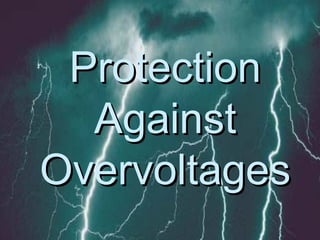The document defines and describes different types of overvoltages that can occur on power systems, including temporary, transient, lightning, and switching overvoltages. It explains that overvoltages are caused by both internal factors like switching and insulation failures, as well as external lightning strikes. The mechanism of lightning is then described in detail, including how charge separation in storm clouds leads to the formation of stepped leaders and streamers, completing an ionized conductive path between the cloud and earth.










































